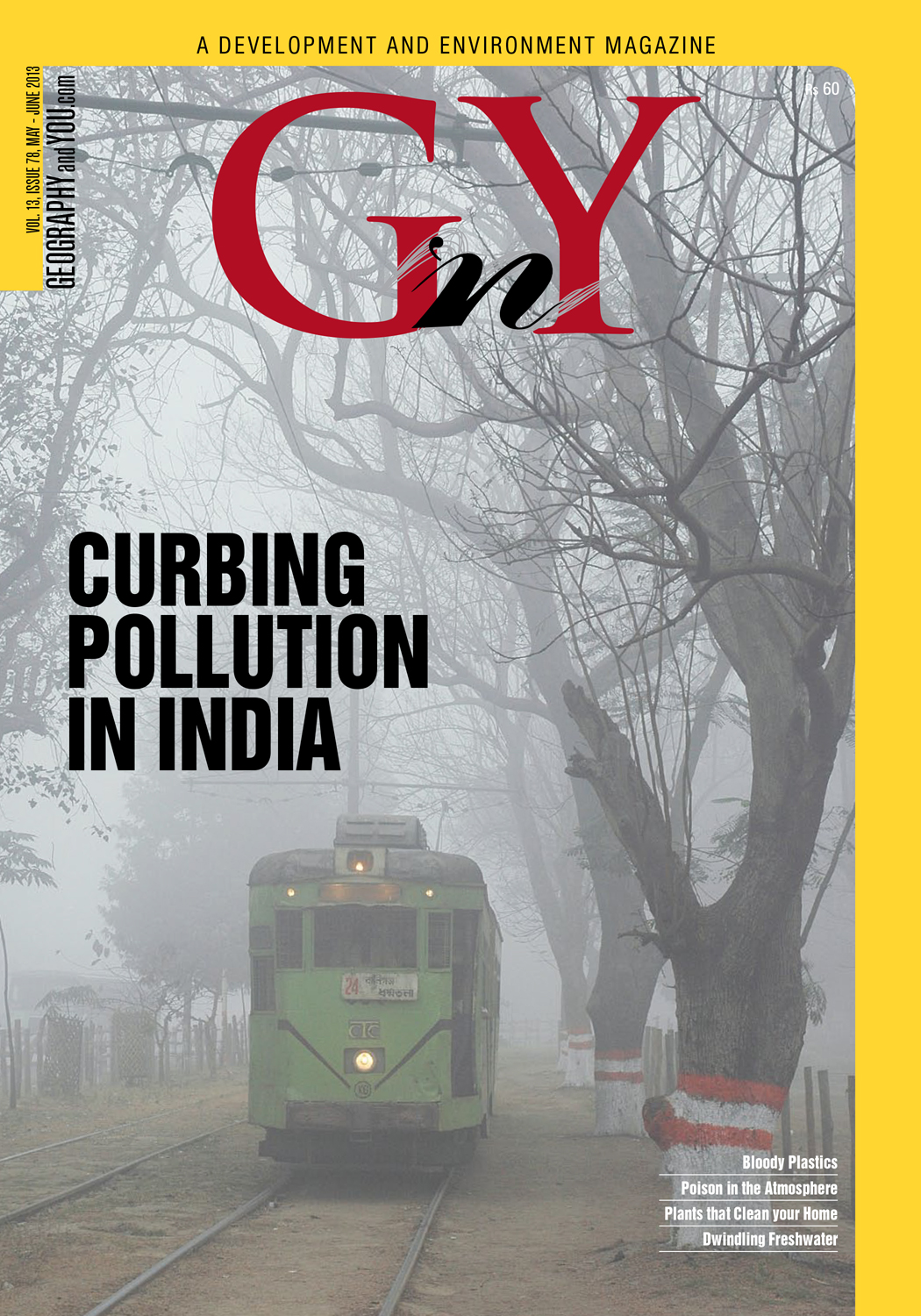
Inside this issue
Curbing Pollution
Sanitary napkins are indeed hygienic—eliminating a plethora of diseases for the user. However, it is a little known fact that these products are largely plastics in various synthetic combinations. As a nation with 310 million potential users unregulated rise of napkins is a humongous disposal issue. Yet, India hasn’t even begun thinking.
With 1.1 million vehicles running on compressed natural gas (CNG), India has the 5th largest fleet of CNG vehicles in the world. However, CNG use only manages to reduce the particulate matter (PM) emissions as compared to other conventional fuels—on other counts however it performs poorly. Combined with the inability of the massive population of two-stroke auto rickshaw engines to adequately burn CNG, beseeches the government to re-evaluate their transport pollution control strategy.
The problematic particles are 2.5 micrometers or less in diameter, not 10, which result in health deficits. In developing countries, there is a lack of surface- based air pollution sensors which make it difficult to assess the extent of particulate pollution. NASA’s study on information obtained by MODIS and MISR-AOD satellites suggested that 80 per cent of the world’s population breathes air with a pollution level above WHO’s recommended level of 10 micrograms.
With an estimated 620,000 deaths in a year and a six fold increase in premature deaths since 2000, India has the worst air pollution in the world.
The ten topmost cities of India with unbelievable levels of air pollution have been laid bare by the ‘Urban outdoor air pollution database’, September 2011, by the Department of Public Health and Environment, World Health Organization. Although the causes of high levels of annual mean particulate matter (PM) with diameter of 10 μg/m3 or less are varied, here are the cities that have achieved the dubious distinction of being the top ten polluted cities in India. On the global scale the highest world record lies with Ahwaz in Iran with 372 μg/m3 and lowest falls in Santa Fe and Clearlake in the US, Whitehorse in Canada with 6 PM10. India ranks the 13th most polluted country out of the 91 studied with an annual mean of 109 μg/m3.
Unfavourable changes are underway in the hydrology and ecology of freshwater systems globally—both on the surface and under the ground. It is true that freshwater sources are limited and unevenly distributed over both time and space but, importantly it is vulnerable to human abuse—overexploited, polluted, fought over and squandered.
Water availability in India is constantly decreasing and is under threat due to the increasing levels of pollution. Out of nearly 17 lakh rural habitations in the country, only 5 lakh have access to safe drinking water supply through pipes in 2013.
Water pollution
India’s urban areas generate 45000 litres of waste water per day while municipalities have the capacity to treat only 26 per cent.
The essay urges you to develop skills in recognising organisms whose survival is intrinsically linked to the quality of water. Conversely you can gauge the quality of the surface water through a cursory inspection.
Pollution in India
With a rich experience of engineering, construction and operation of power plants, NTPC is one of the most efficient power companies in the world with operations that match global standards.
Indoor Pollution
Common day household activities release harmful toxins into our indoor environment. But indoor plants may provide a valuable weapon in the fight against rising levels of air pollution in the home. Such plants are not only decorative, but are surprisingly useful in absorbing potentially harmful gases and cleaning the air inside modern buildings. Studies generated at NASA recommend that you use 15 to 18 good-sized houseplants in 6 to 8 inch diameter containers to improve air quality in an average 1,800 square foot house. The more vigorously they grow the better job they'll do in improving the air quality in your homes.
In brief
The 12th Five Year Plan (2012-2017) document envisages filing of ‘water returns’ as compulsory by the commercial and manufacturing companies to check the reckless use of water and pollution. Water returns should include key measures like water utilisation per unit of produce, effluent discharge
A nation as large as India, does not suffer from dearth of resources—we have enough. But, what we do not have is a will to utilise our funds judiciously, with adequate provisions for transparency and accountability. On one end, with huge environmental challenges before us, we find that in 2011-12,

